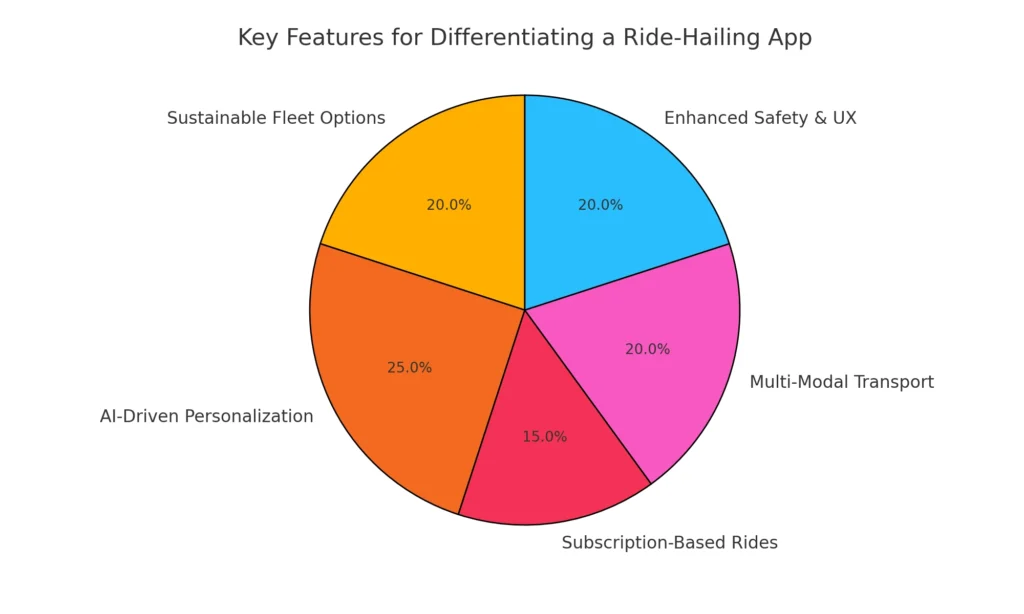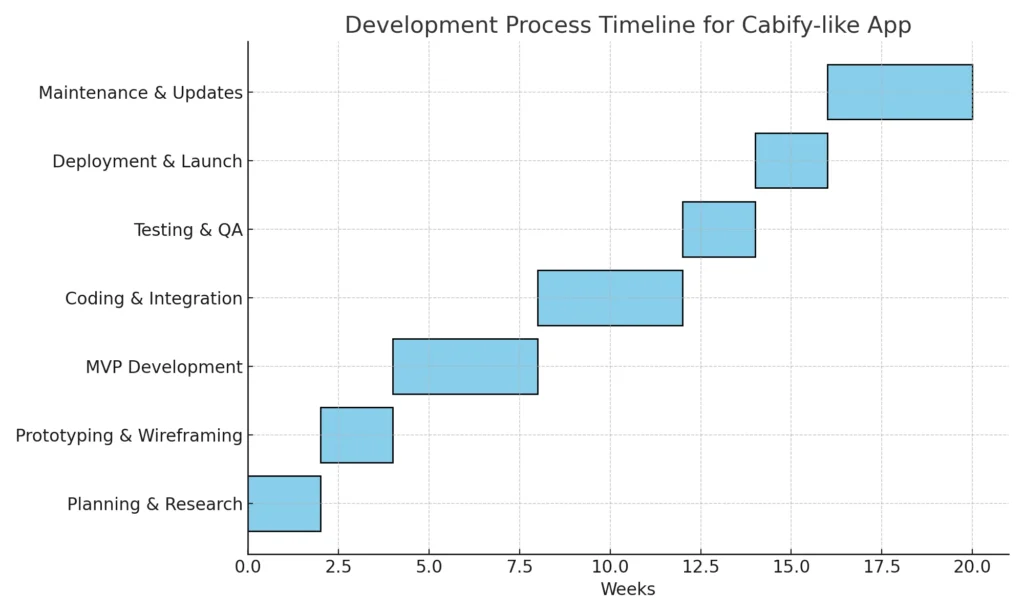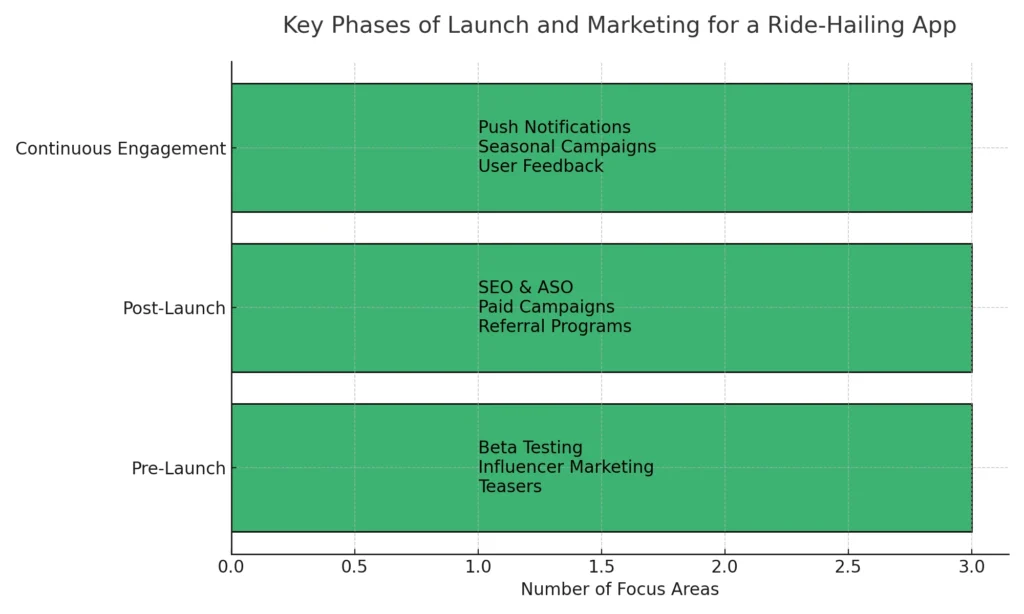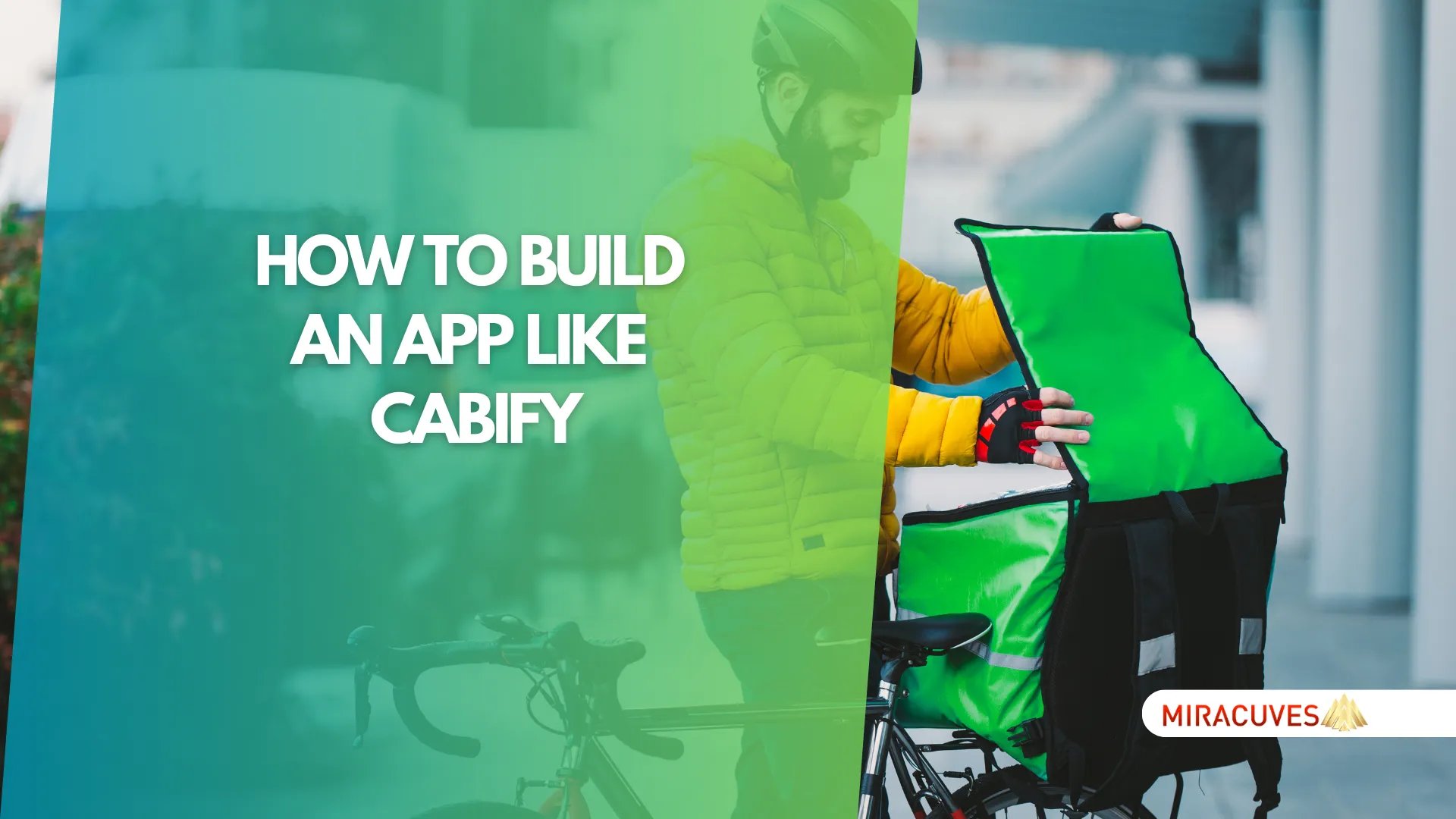In today’s fast-moving world, convenience and accessibility are paramount, and ride-hailing apps like Cabify are transforming the way people commute. Cabify has established itself as a premium mobility solution, allowing users to book rides quickly while ensuring safety, transparency, and seamless payments. Building an app like Cabify is not just about replicating features—it’s about understanding user needs, ensuring efficient service, and capturing a growing market.
This guide will walk you through the process of creating an app like Cabify, including essential features, business models, and technical frameworks. Whether you’re an entrepreneur looking to tap into the ride-hailing sector or a developer planning your next big project, this blog will equip you with the knowledge needed to bring your vision to life in 2025.
What the App Is and What It Does
Cabify is a ride-hailing service that provides users with a convenient and efficient way to book transportation. It stands out by offering multiple service tiers, including premium and eco-friendly rides, along with corporate plans tailored for businesses. Cabify ensures safe travel with driver background checks, GPS-enabled live tracking, and contactless payment options, prioritizing both customer satisfaction and driver welfare.
This app enables riders to schedule rides in advance, track their driver’s location in real-time, and receive notifications throughout the journey. Cabify also distinguishes itself through sustainable mobility efforts, promoting electric vehicles to reduce environmental impact. The platform is operational in several countries, providing a trusted solution for urban transport by ensuring reliable, affordable, and safe rides.
Why Build This App?
The ride-hailing market continues to grow rapidly as urban populations increase and public transportation struggles to meet rising demands. Entrepreneurs see opportunities to launch ride-hailing platforms like Cabify to address unmet needs for convenient, safe, and affordable transportation. With the gig economy expanding, developing a ride-hailing app provides an excellent business model that can attract both users and drivers.
In 2025, sustainability is becoming a key focus, and building a Cabify-style app that integrates electric vehicles (EVs) or carbon-neutral initiatives can give businesses a competitive edge. Moreover, businesses are capitalizing on the trend toward corporate ride-hailing solutions, catering to companies needing reliable transport services for employees and clients.
Investing in a ride-hailing app offers not just financial rewards through commissions and ride fares but also valuable data insights into urban mobility patterns. As digital transformation continues, building a Cabify clone positions entrepreneurs to leverage growing consumer expectations for on-demand services, ensuring long-term growth potential in the transportation sector.
What Can I Do to Differentiate It?
In the competitive ride-hailing market, standing out is essential. To differentiate your app from established players like Cabify, Uber, and Lyft, you must introduce unique features and superior user experiences. Here are a few ways to add innovation:
- Sustainable Fleet Options
- Offer electric vehicles (EVs) or hybrid cars as part of your ride options.
- Incentivize drivers to switch to green vehicles through lower commissions or bonuses.
- AI-Driven Personalization
- Use machine learning algorithms to offer personalized ride suggestions based on user behavior.
- Provide exclusive offers or loyalty rewards tailored to frequent users.
- Subscription-Based Rides
- Introduce a subscription model where customers can pay a flat fee for unlimited rides within a city or zone.
- Partner with corporations to provide monthly ride packages for employees.
- Multi-Modal Transport
- Expand beyond cars by including bike rentals, scooters, or public transit integration within the app.
- Provide users with the freedom to choose their preferred transportation type for short distances.
- Enhanced Safety and User Experience
- Introduce live audio monitoring or video features during rides for added security.
- Offer a panic button that sends alerts to emergency contacts in real-time.

Market Size, Growth, and Business Model
The ride-hailing industry continues to expand at a remarkable pace, with global market size projected to reach $285 billion by 2030. Increasing urbanization, the rise of cashless transactions, and growing demand for on-demand services are fueling this growth. Countries in Europe, Latin America, and Southeast Asia show particularly high adoption rates, offering excellent expansion opportunities for new entrants.
The industry is evolving, with many companies focusing on sustainable growth through electric fleets and multi-modal transport options. New business models are emerging beyond traditional commission-based models, allowing companies to experiment with subscriptions, corporate packages, and advertising partnerships.
| Business Model | Revenue Stream | Example Apps |
|---|---|---|
| Commission-Based | Fees per ride or transaction | Uber, Cabify, Bolt |
| Subscription-Based | Monthly/Yearly ride packages | Lyft, Gojek |
| Corporate Packages | Ride services for businesses | Cabify, Uber for Business |
| In-App Advertising | Ads displayed to users | Free Now, Ola |
| Multi-Modal Transport | Bike, scooter, and car rentals | Lime, Grab |
Features of the App
Building a successful app like Cabify requires a seamless blend of essential and advanced features to meet the expectations of users and drivers. Here are the key features that your ride-hailing app must offer:
User-Side Features
- Real-Time GPS Tracking: Allow users to monitor their ride from booking to drop-off.
- Payment Integration: Multiple payment options, including credit cards, wallets, and cash.
- Ride Scheduling: Users can book rides in advance for added convenience.
Admin-Side Features
- Analytics Dashboard: Monitor ride activity, earnings, and user engagement in real-time.
- Driver Management: Manage driver profiles, performance, and ride history.
Advanced Features
- Push Notifications: Keep users updated on ride status and promotions.
- In-App Chat: Provide direct communication between drivers and riders.
- AI-Based Recommendations: Suggest ride options or promotions based on user preferences.
Technical Requirements
To ensure smooth operation and scalability, a ride-hailing app like Cabify requires a robust technology stack. Below are the key technical components you’ll need:
Frontend Technologies
- React Native or Flutter: For building cross-platform apps on both iOS and Android.
- Swift and Kotlin: Native development for enhanced performance and user experience.
Backend Technologies
- Node.js or Django: To handle server-side operations and APIs efficiently.
- MongoDB or PostgreSQL: Databases for managing user data, ride history, and payments.
APIs and Integrations
- Google Maps API: For GPS tracking and location-based services.
- Stripe or PayPal: For secure payment processing and wallet integration.
- Twilio: To enable in-app messaging and push notifications.
Cloud Hosting and DevOps
- AWS or Google Cloud: Ensure scalable infrastructure and real-time data handling.
- CI/CD Pipelines: Automate testing, integration, and deployment for continuous updates.
To ensure scalability and reliable performance, your app should leverage AWS Cloud Infrastructure for hosting solutions that manage fluctuating traffic effectively (aws.amazon.com). Cloud services enable seamless data processing and real-time operations, essential for ride-hailing apps with high user demands.
Design and User Interface (UI/UX)
A user-friendly and visually appealing design is crucial for the success of any ride-hailing app. The UI/UX must ensure smooth navigation, quick access to core features, and a pleasant visual experience to keep users engaged.
Key UI/UX Design Principles
- Simplicity and Clarity: Use a minimalist design to make booking rides intuitive. Users should easily navigate through the app without confusion.
- Consistent Visual Identity: Maintain consistent color schemes, typography, and icons to strengthen your brand identity.
- Seamless User Flows: Ensure the booking process—from entering a destination to tracking the driver—is smooth and fast.
Essential UI Components
- Interactive Maps: Real-time GPS visualization for tracking rides.
- Easy Navigation: A tab-based or scrollable design to access bookings, payments, and settings effortlessly.
- Feedback Options: Prominent features to rate drivers and provide feedback after each ride.
Enhanced UX Elements
- Dark Mode: Offer both light and dark themes for better usability in different environments.
- Accessibility Features: Make your app accessible for visually impaired users by including voice guidance and large text options.
| UI/UX Element | Description | Impact on User Experience |
|---|---|---|
| Simplicity and Clarity | Minimalist design with intuitive navigation | Reduces user confusion and frustration |
| Consistent Visual Identity | Use of branded colors, typography, and icons | Strengthens brand recognition |
| Seamless User Flows | Smooth transition from booking to payment | Enhances user satisfaction and retention |
| Interactive Maps | Real-time GPS tracking for rides | Builds user trust and transparency |
| Dark Mode | Light and dark themes for different environments | Improves usability in low-light settings |
| Accessibility Features | Voice guidance and large text options | Makes the app inclusive and easy to use |
| Feedback Options | Rating and review features | Encourages engagement and quality control |
Development Process
Building a ride-hailing app like Cabify requires a well-structured development process to ensure efficiency and high performance. Here’s a breakdown of the key steps involved:
1. Planning and Research
- Define the app’s scope, key features, and user personas.
- Conduct market research to identify gaps and understand competitor strategies.
2. Prototyping and Wireframing
- Create wireframes to visualize the user flow and structure of the app.
- Develop prototypes to validate ideas with stakeholders and gather feedback early.
3. Minimum Viable Product (MVP) Development
- Focus on building the core features to test market demand.
- Launch the MVP to receive user feedback and refine the app further.
4. Coding and Integration
- Develop the frontend and backend components using the selected tech stack.
- Integrate essential APIs for GPS, payments, and notifications.
5. Testing and Quality Assurance
- Perform functional and performance testing to ensure smooth operation.
- Identify and fix bugs through multiple iterations before launch.
6. Deployment and Launch
- Deploy the app on app stores (iOS and Android) and web platforms.
- Use beta testing to gather final feedback and ensure a smooth launch.
7. Post-Launch Maintenance and Updates
- Monitor app performance and user feedback to implement improvements.
- Release regular updates to keep the app optimized and relevant.

Want to build the next Cabify?
Create a smart, scalable ride-hailing app with real-time tracking,
dynamic pricing, and seamless payments.
Cost Estimation and Timeframe
Developing an app like Cabify involves balancing quality, speed, and budget. Costs can vary based on the complexity of features, platform choices, and the development team’s location. Below is an overview of key factors that influence the cost and time required:
Key Cost Factors
- Design & User Interface: A well-crafted UI can cost more but ensures a seamless user experience.
- Backend Development: Building a scalable backend with APIs, GPS tracking, and payment integration takes time and expertise.
- Testing & QA: Rigorous testing to ensure the app performs smoothly across all platforms.
- Ongoing Maintenance: Regular updates and maintenance ensure long-term user satisfaction.
Development Time Estimation
- Basic MVP: 2-3 months
- Full-Fledged App with Advanced Features: 4-6 months
How Miracuves Solutions Cuts Costs and Time
- Cost Efficiency: Up to 90% cheaper compared to global development rates.
- Speed: Completion up to 30x faster than the industry average.
- Custom Solutions: Tailored features and post-launch maintenance to keep your app competitive.
| Task | Global Cost | Global Time | Miracuves Solutions Cost | Miracuves Solutions Time |
|---|---|---|---|---|
| Design | $5,000 | 1 month | $500 | 1 day |
| Development | $50,000 | 3 months | $5,000 | 3 days |
| Testing & QA | $10,000 | 1 month | $1,000 | 2 days |
| Maintenance & Updates | $15,000/year | Ongoing | $1,500/year | Ongoing |
Monetization Strategies
To make your ride-hailing app profitable, it’s essential to implement multiple revenue streams. Diversifying monetization methods ensures stable cash flow and long-term sustainability. Below are some of the most effective strategies:
1. Commission-Based Earnings
- Earn a percentage of every ride booked through the app.
- Surge pricing during peak hours boosts profits.
2. Subscription Models
- Offer customers subscription plans with unlimited rides for a flat monthly fee.
- Introduce corporate subscriptions for companies needing regular transport services.
3. In-App Advertising
- Display targeted ads, banners, or promotional offers within the app.
- Collaborate with local businesses to promote services and share ad revenue.
4. Cancellation and Booking Fees
- Charge users a small fee for confirmed bookings.
- Implement cancellation fees to minimize last-minute cancellations.
5. Partnerships and Promotions
- Partner with restaurants, hotels, and events for exclusive ride deals.
- Offer referral incentives to expand the user base organically.
| Monetization Strategy | Description | Examples/Benefits |
|---|---|---|
| Commission-Based Earnings | Take a percentage from each ride booked | Boosts revenue, especially with surge pricing |
| Subscription Models | Offer unlimited rides for a flat monthly fee | Attracts regular users and corporate clients |
| In-App Advertising | Display targeted ads within the app | Generate additional revenue from local businesses |
| Cancellation and Booking Fees | Charge fees for bookings and cancellations | Reduces cancellations and ensures booking commitment |
| Partnerships and Promotions | Collaborate with businesses for exclusive deals | Increase brand exposure and user acquisition through referrals |
Launching and Marketing the App
A successful launch is more than just uploading your app to stores—it’s about creating buzz and momentum that attracts users and builds trust from day one. Below are the key steps for launching and promoting your ride-hailing app effectively.
Pre-Launch Strategy
- Beta Testing: Involve a small group of users to test the app and gather feedback for improvement.
- Influencer Marketing: Collaborate with influencers to promote your app before launch.
- Landing Page and Social Media Teasers: Use countdowns, sneak peeks, and offers to build excitement.
Post-Launch Marketing
- SEO and ASO (App Store Optimization): Ensure your app ranks well by using relevant keywords, optimized descriptions, and appealing visuals.
- Paid Campaigns: Use Google Ads and social media advertising to target relevant audiences.
- Referral Programs: Encourage users to invite friends by offering discounts or ride credits.
Continuous Engagement
- Push Notifications: Inform users about discounts, offers, and status updates.
- Seasonal Campaigns: Launch promotions during holidays or special events to boost rides.
- Collect and Act on Feedback: Monitor reviews and ratings to address user concerns quickly and enhance user satisfaction.

Legal and Regulatory Considerations
Launching a ride-hailing app involves navigating legal and regulatory frameworks to ensure compliance and protect both users and drivers. Failing to meet these standards can lead to penalties, app suspension, or loss of public trust. Below are the key areas to focus on:
1. Data Privacy and User Consent
- Comply with data protection laws such as the General Data Protection Regulation (GDPR) in Europe.
- Ensure users explicitly consent to data collection, including GPS tracking and payment information.
2. Driver and Vehicle Compliance
- Verify drivers’ licenses, insurance, and background checks to ensure passenger safety.
- Ensure vehicles meet safety and emission standards required by local authorities.
3. Payment Gateway Regulations
- Partner with certified payment processors to handle transactions securely.
- Follow anti-money laundering (AML) and payment card industry (PCI) compliance standards.
4. Local Transport Laws and Permits
- Register your business with regional authorities and obtain necessary permits for operations.
- Understand restrictions on ride-hailing services in your target areas, such as licensing rules or zoning laws.
5. Insurance and Liability Coverage
- Provide comprehensive insurance for both drivers and passengers.
- Have clear policies in place to manage accidents, claims, and disputes.
Compliance with General Data Protection Regulation (GDPR) is crucial to protect user data and maintain trust in European markets (gdpr.eu). Implementing robust data encryption and secure storage ensures your app meets these legal requirements, minimizing the risk of penalties and safeguarding user privacy.
Future Growth and Scalability
As the ride-hailing industry evolves, ensuring your app is scalable and ready for future growth is essential. A well-prepared app can adapt to new technologies, meet growing user demands, and expand to new markets without disruption.
1. Expand to New Regions
- Launch your service in multiple cities or countries to tap into new user bases.
- Adapt the app to local languages, currencies, and regulations for seamless operations.
2. Introduce New Services
- Add features like carpooling, bike rentals, or delivery options to diversify your offerings.
- Offer premium ride tiers to cater to corporate clients and high-end users.
3. Embrace New Technologies
- Integrate AI-driven features for personalized recommendations and smarter route optimization.
- Explore autonomous vehicle integration as the technology matures.
4. Build for Scalability
- Use cloud-based infrastructure to manage sudden increases in traffic and users.
- Implement modular coding practices to add new features without disrupting existing functionality.
5. Regular App Updates and User Feedback
- Release new versions of the app regularly to keep up with trends and user expectations.
- Leverage user feedback to guide future updates and maintain high satisfaction levels.
Why Trust Miracuves Solutions for Your Next Project?
Choosing the right development partner is essential for building a successful ride-hailing app. Miracuves Solutions stands out as a leader in the app development industry by offering unmatched speed, quality, and affordability. Here’s why you should consider Miracuves Solutions for your next project:
1. Cost-Effective Development
- Get your app developed at 90% lower cost than the global market average.
- No compromise on quality, even with cost savings.
2. Faster Delivery Times
- Complete your project 30x faster than the industry standard.
- Reduce time-to-market with agile development and streamlined processes.
3. Comprehensive End-to-End Support
- From conceptualization to post-launch maintenance, Miracuves Solutions provides full-cycle support.
- Benefit from continuous updates and feature enhancements to keep your app competitive.
4. Customized Solutions for Scalability
- Tailor-made solutions designed to grow with your business needs.
- Build your app with the future in mind, ensuring it scales effortlessly.
5. Proven Track Record and Client Satisfaction
- Trusted by clients across industries for reliable, high-quality apps.
- Positive feedback from satisfied customers and successful project outcomes.
Conclusion
Building an app like Cabify offers a tremendous opportunity to tap into the booming ride-hailing market. By following the right development process, incorporating innovative features, and ensuring scalability, you can create a platform that stands out in this competitive industry. With the right strategy in place, your app can not only attract users but also grow sustainably over time.
Collaborating with Miracuves Solutions ensures that your project stays on track, within budget, and achieves success faster than ever. Whether it’s reducing development costs or speeding up delivery, Miracuves Solutions is the trusted partner to help bring your vision to life.
Ready to build a transportation app?
Start Your Transportation App Today Whether it’s for ride-sharing or delivery, we’ll help you create a seamless user experience.
FAQs
How long does it take to build an app like Cabify?
Depending on features, development can take 3 to 6 months, but Miracuves Solutions can deliver within days.
What is the estimated cost to develop a Cabify-like app?
Globally, it can cost up to $50,000, but Miracuves Solutions offers it for as low as $5,000.
Which platform should I launch on first—Android or iOS?
Launching on both platforms is ideal for maximum reach, but an MVP can begin with one based on target audience preferences.
What are the must-have features for a ride-hailing app?
Real-time GPS tracking, secure payment options, and ride scheduling are essential features for user satisfaction.
How can I ensure my app complies with local regulations?
Research transport laws and integrate certified payment gateways that meet data security and compliance standards.








